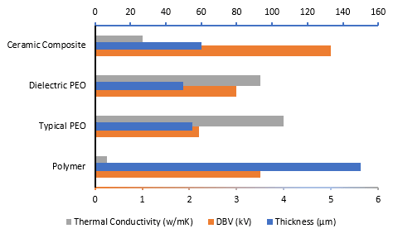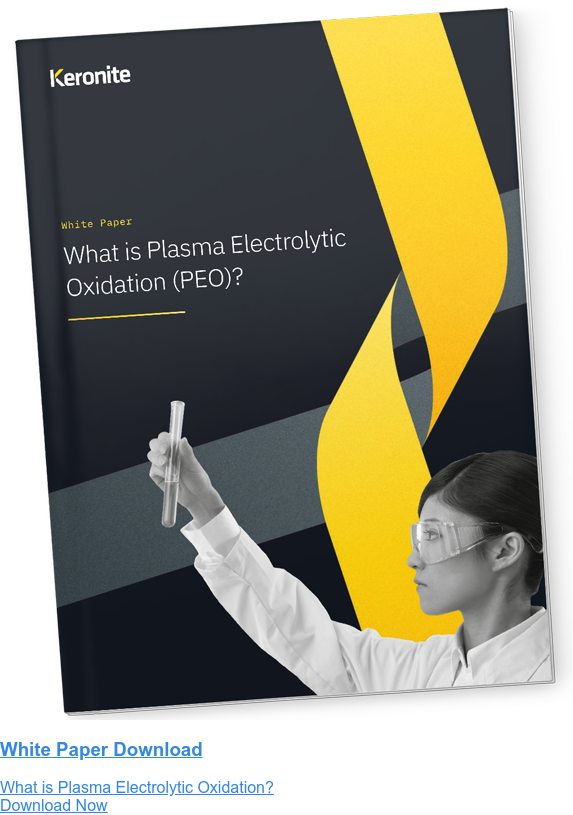PEO as an alternative to traditional dielectric barrier coatings in Li-ion batteries
11 May 2023Due to global initiatives to reduce carbon emissions and to transition towards a net-zero carbon future, focus of numerous industries has shifted towards electrification. As a result, the collection and storage of harvested electricity has rapidly become a leading field of innovation. Improvements to the energy density of battery packs yield significant impact due to reduction in weight and physical footprint that allows for greater efficiency and thus an improved range during use.
The features of Li-ion batteries
Lithium-ion batteries are the current gold-standard for electrical energy storage. These packs are constructed of multiple modules wired in series that in turn are built using several Li-ion cells. According to Samsung (battery pack supplier for BMW), the latest BMW i3 contains a 42.2 kWh battery pack, constructed from 8 modules and a total of 96 individual cells. Each individual cell casing is typically coated with a polymer layer that isolates the cell electrically. This coating is normally 100 to 200 microns thick and thus accumulates to a significant increase to the overall size of the battery pack.
For a 96-cell pack, the polymer coating alone contributes 70 cm3 (the equivalent of 4 extra cells). On a larger scale, for example HGVs and buses, the contribution of the polymer coating will be much more substantial. This ultimately results in a significant reduction in energy density for the battery packs. Polymer coating solutions also offer poor thermal conductivity (typically ~0.25 W/mK), and therefore heat management becomes a major concern.
Ceramic composites as an alternative to polymer
Pure ceramic or ceramic composite alternatives are gaining traction in their applications towards high dielectric strength due to their vastly improved thermal properties. Materials scientists at Keronite have recently made significant breakthroughs in applying their proprietary plasma electrolytic oxidation (PEO) technique towards high dielectric barrier coatings that maintain high thermal conductivity at reduced thickness.
Keronite’s recently developed ‘Chimera’ approach utilises a multiple stage process to initially deposit pure aluminium oxide onto an aluminium alloy substrate. This process is rapid, requires relatively little electrical energy and provides the ideal surface composition for densification in a second stage. Ultimately, this produces a highly dense aluminium oxide coating that can achieve dielectric breakdown voltages of >3 kV. This is all achieved at thickness of approximately 50 microns, potentially a quarter of that required for a polymer coating (resulting in only an 18 cm3 contribution to volume on a 96-cell pack).
The thermal conductivity of these ‘Chimera’ pure ceramic coatings are in excess of 1 W/mK providing excellent heat management properties and dwarfing the performance of polymer alternatives. In combination with excellent dielectric and thermal properties, these coatings are extremely hard (~1700 HV), wear-resistant, and corrosion resistant making them an excellent alternative to current polymer solutions.
PEO as a solution for Li-ion batteries
Ceramic composites offer an intermediate between the pure ceramic and polymer solutions. Using Keronite PEO, a dense base layer forms, topped with a microporous layer. Typically, dielectric breakdown occurs through the open pores in a PEO coating; however, using specialist sealers, Keronite can fill the pores of the PEO coating and provide reinforcement to the dielectric barrier. Using this approach, dielectric breakdown strength in excess of 5kV can be achieved at a similar thickness to the pure ceramic solution (50-100 microns).
Ceramic composite thermal conductivity is lower than the pure ceramic solution (typically 0.5-0.75 W/mK depending on sealer thickness) but much improved over a polymer coating and thus offers excellent benefits of both solutions. Hardness, wear resistance, and corrosion resistance are also high due to the underlying properties of the Keronite ceramic.
Keronite has the skills and equipment to apply both the PEO layer and the specialist sealer to aluminium, with development of similar technology on titanium and magnesium substrates planned for 2023. The figure below outlines the benefits of Keronite PEO solutions over the current industry standard polymer solution:

To find out more about how Keronite's advanced materials science can solve your dielectric barrier challenges, contact a member of our team today. To discover the specifics surrounding PEO and how it can benefit your components, download our white paper below.

 Keronite is now part of the CWST engineered coatings business.
Keronite is now part of the CWST engineered coatings business.